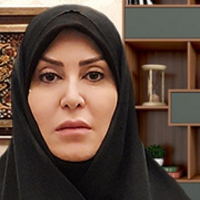Introduce Detection and Correction of Ambiguity of words System Education to increase the efficiency of Translator from Persian text to Persian sign Language using Ontology.
The mainstream of society has isolated deaf people due to their inability to communicate with the deaf community. Currently, 1,400 deaf people are born in the country every year, most of whom have a hearing family. For this reason, parents in the early years of a child's life, due to unfamiliarity with sign language, cannot teach them a complete model of sign language. As the name implies, sign language uses gestures, or more precisely hand, eye, and standing postures to convey meaning. If, for example, the movement of the mouth or the general state of the face changes, the meaning of the word produced can also change, or in other words, another word is produced. The same principle applies to the movements of the fingers and hands. The most important factor through which human beings can form their relationships and connections is using different methods such as speaking, writing and sign language. The point that deaf or semi-deaf people are ignored in communities is because of their disability in forming intimate relationships, and also the lack of common training according to what is needed in the society. The text to sign language translation systems have been created to resolve communication problems among hearing and deaf persons. Due to unstructured Persian language as well as the problems of Persian sign language, using translators’ systems of other countries is not practicable. The present study seeks to design a system that receives Persian text as an input and changes it to Persian sign language after all the necessary natural language processing is done.
In doing this matter, several challenges are seen on our way: a) The number of Persian sign language words which are few compared to the words in Persian language and b) The ambiguity and pun normally used in Persian language. So, similar systems’ architecture could not be applied. Therefore, a new architecture is proposed that uses the relation between the removal pun modules and input text invert module to the deaf world by using designed ontology.
Using this architecture, the efficiency of the Persian text to Persian sign language translator system has improved to 95% and increased the accuracy of the translator system by tripling.
Sign language interpreter system is designed to connect deaf people with other people in the community. In addition, the sign language translator system can be used to teach sign language. Implementing the Persian sign language translator system has challenges due to its unstructured as well as the problem of ambiguity of some words in Persian, as well as the problems in Persian sign language and the limitations in the number of known movements of this language. The paper addressed the challenges to an acceptable degree by presenting a new architecture. In the new architecture, two modules for recognizing and correcting puns and converting sentences into the world of the deaf have been used. Both modules use their own designed ontology.
- حق عضویت دریافتی صرف حمایت از نشریات عضو و نگهداری، تکمیل و توسعه مگیران میشود.
- پرداخت حق اشتراک و دانلود مقالات اجازه بازنشر آن در سایر رسانههای چاپی و دیجیتال را به کاربر نمیدهد.



